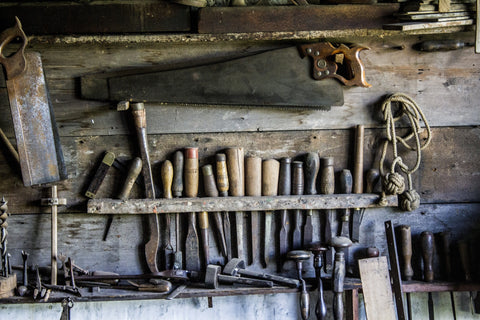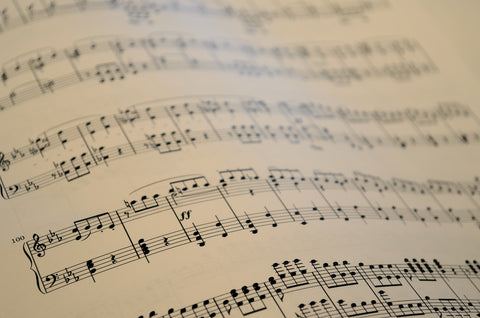While talking to many people around us who didn't know much about the accordion we realised that the question that came up most often for musicians curious to know more was the difference between a diatonic accordion and a chromatic accordion. This is a trivial question for any accordionist but nevertheless, when you discover the accordion, it is easy to get lost in all this jargon.
If you are discovering the accordion, by simple curiosity or if you are thinking of starting it but you don't know what to choose, this article is made for you!
A mechanical difference
First of all, let's remind ourselves of the way an accordion is built, absolutely necessary to understand the difference between diatonic and chromatic accordions.
Roughly speaking, the accordion can be divided into three large mechanisms working together, a keyboard on the right, a keyboard on the left and a bellows in the middle.
In order to produce a sound, the accordionist presses a button on the right or left keyboard. The right keyboard is most often used for the melody while the left keyboard is used for the accompaniment by producing basses or harmonies that accompany the melody. Each button activates a valve that opens or closes the air flow that will make the reeds vibrate and create the sound.
Simply pressing a button is not enough. The accordionist, in order to produce a sound, must activate the bellows at the same time. Indeed, the accordion, under its very mechanical aspect, is basically a wind instrument.
The air that can then pass under the valves opened by the previously activated buttons will vibrate the steel blades that will then produce a unique sound, that of the accordion. The principle is the same as that of the harmonica, except that here there is no need to blow into the instrument, it is the bellows that do the work.
The mechanical difference between diatonic and chromatic accordions is simply under the valves, at the level of the blades. Under each valve there are two blades. One vibrates when the air enters the instrument by opening the bellows and the other when it leaves by closing the bellows. On a chromatic accordion, these two blades are identical and the sound produced is therefore the same whether you pull or push the bellows. On the other hand, on a diatonic accordion, these two blades are generally different and the sound will be different when pulling or pushing the bellows!
For this reason, when you look at a diatonic accordion versus a chromatic accordion, the diatonic actually has twice as many notes as buttons, while the chromatic has as many buttons as notes, and often even more buttons than notes! A note can be played by several different buttons.
The other major difference between the diatonic accordion and the chromatic accordion is in the harmonic structure of the instrument. This means that the chromatic accordion has the twelve notes of the chromatic scale, while the diatonic accordion only plays the notes of its key. If it is in C, for example, it can only play the notes of the C scale. More simply by comparing with a piano, a chromatic accordion will be able to play with all the keys while the diatonic accordion will only play with the white keys.

A physical difference to be taken into account
The mechanical difference may seem slight, but it is of crucial importance in the demarcation of the repertoire of the two instruments. The diatonic accordion being smaller, it is the instrument destined for travel and it is the image of the accordion that is found in the popular imagery of sailors. As a result, the diatonic accordion is often associated with more traditional music and sounds such as Breton or folk music. The diatonic accordion can be found in most traditional music festivals. The diatonic accordion has the advantage of being smaller and lighter, ideal for frequent travellers! You can also find many models with more notes and options to enrich your sound and your repertoire in a relatively tight budget.
The chromatic accordion, although it exists in all sizes, is generally more imposing and heavier. However, the weight of the instrument does not pose any problem apart from transportation as we have detailed in this article: The weight of an accordion: A false problem. A chromatic accordion will also have a greater variety of options than its cousin with different bass systems, the ability to choose a piano or button keyboard, as well as many register options to modulate the sound of your instrument.
Especially a difference in repertoire

The diatonic accordion is often considered as more accessible, in truth it is mainly a difference of repertoire, the traditional repertoire is often composed of pieces more accessible to beginners. It should also be noted that the diatonic accordion repertoire has a very active community that produces and shares numerous tablatures, accessible to people who do not know solfeggio for example. On the other hand, the principle of the diatonic accordion with two distinct notes by pulling and pushing makes it more compact but also brings a lot of disadvantages not to be neglected when you choose. Indeed, because of this mechanism, some pieces will be difficult to play because it will be impossible for you to perform the necessary harmonies with your left hand for example. A good part of the classical, jazz, tango repertoire or pieces composed for other polyphonic instruments like the piano will not be accessible to you. Don't worry though, there is enough traditional music to last a lifetime!
The chromatic accordion has no specific repertoire! It can be found in classical ensembles, orchestras, jazz groups, Latin American music and even pop music! Of the two instruments, it is the most versatile. The repertoire of the chromatic accordion can be similar to that of the piano, which is very broad. And like the piano, it can be used as a concert instrument. However, the chromatic accordion can also be found in more popular formats such as the musette. The repertoire of the chromatic accordion covers in fact that of the diatonic accordion and adds to it that of all other polyphonic instruments!
Conclusion: Finally, which instrument to choose?

The instrument that suits you best
The technique is quite different between a diatonic accordion and a chromatic accordion. As a general rule, we advise people who have never played an instrument before and who want to be able to play a few pieces quickly to go for a diatonic accordion. For musicians who already have a basic knowledge of music, the choice of a chromatic accordion will allow you to develop without barriers.
What about children?
As far as the choice of an instrument for children is concerned, there are accordions adapted to their size in both chromatic and diatonic. Children are often attracted by the instrument rather than by the repertoire, which they know little about.
Be careful! The technique of each of these two types of accordions being very different, it is not easy to start with one and continue with the other. As a comparison, it is similar to learning to play the trumpet after having learned to play the saxophone or vice versa...
